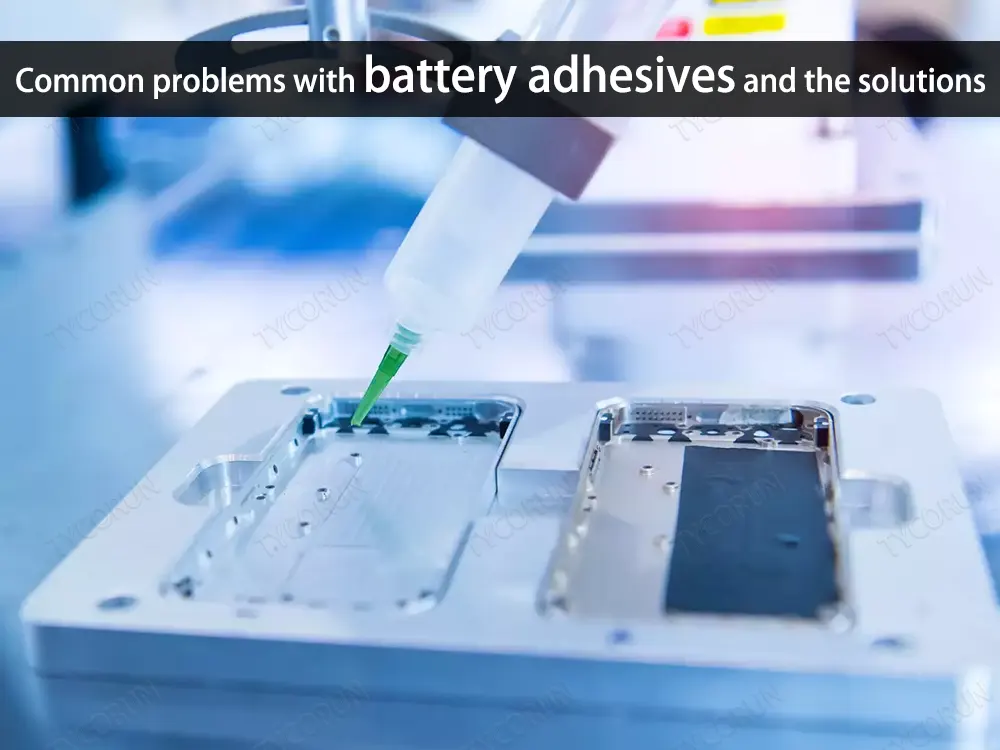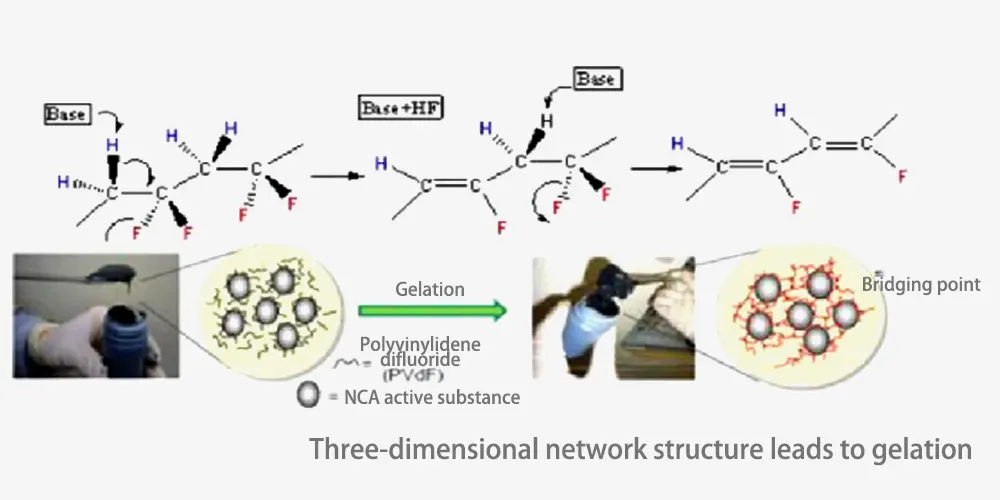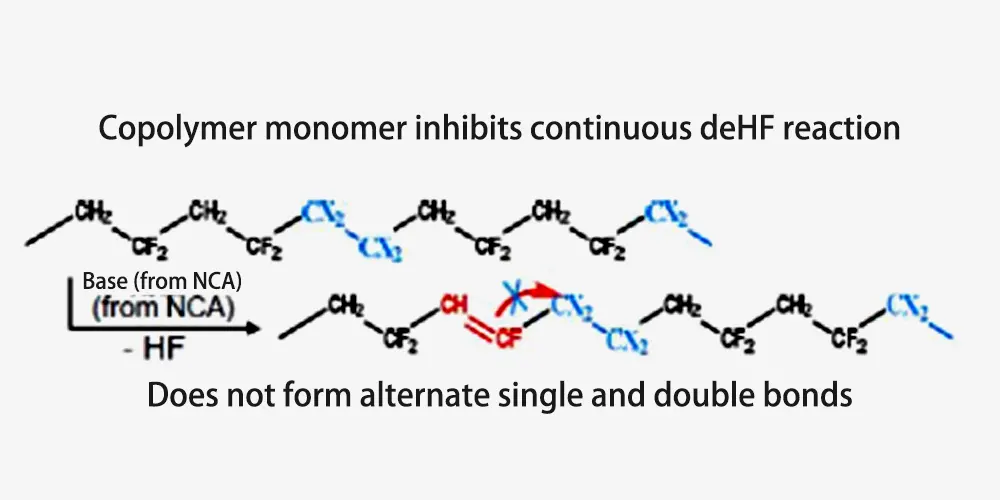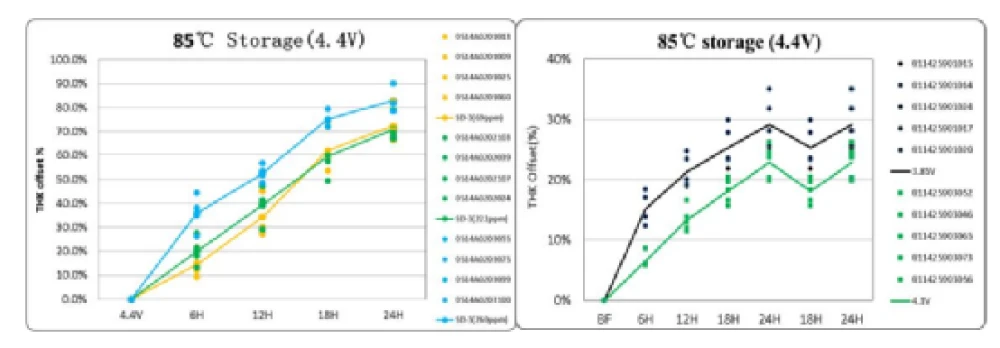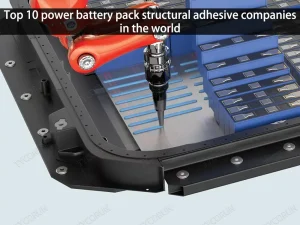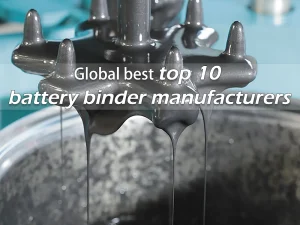Home » battery news » Common problems with battery adhesives and the solutions
Common problems with battery adhesives and the solutions
The adhesive is an important component in the lithium battery slurry, which binds various particles together to form an adhesive slurry, which is closely bonded to the metal foil.
In addition to maintaining the structural, mechanical, and electrical integrity of the electrode, it also plays an important role in forming a stable SEI layer. This article will describe the common problems of lithium battery adhesives and the corresponding solutions.

What to do if the slurry settles?
Reasons:
- The type of CMC selected is not suitable. The degree of substitution and molecular weight of CMC will affect the stability of the slurry to a certain extent. For example, CMC with a low degree of substitution has poor hydrophilicity and good wettability to graphite, but the suspension ability of the slurry is poor.
- The amount of CMC is small and cannot effectively suspend the slurry.
- The amount of CMC involved in kneading during the kneading process is too much, resulting in insufficient amount of CMC that is free between the particles and acts as a suspension, which often leads to poor stability of the slurry.
- High mechanical force and the fluctuation of the acidity and alkalinity of the slurry may lead to the demulsification of SBR, thus making the slurry settle.
Solutions:
- Replace or match with CMC with high degree of substitution and large molecular weight, such as the combination of WSC and CMC2200 in the mass production formula. WSC itself has low molecular weight and low degree of substitution, and has good wettability to graphite and weak suspension ability. After matching CMC2200, the stability of the slurry has been greatly improved。
- Increasing the amount of CMC is one of the most effective means to improve the stability of the slurry, but it is necessary to find a balance between the process capability and the low-temperature performance of the battery.
- Reduce the amount of CMC for kneading and increase the content of free CMC, which can improve the stability of the slurry to a certain extent.
- After SBR is added to the slurry system, the stirring speed of the rotation should be reduced.
What to do if the hole is blocked during filtration?
Reasons:
- Poor wettability and no dispersion of the active substance.
- SBR cannot be filtered due to demulsification.
Solutions:
- Adopt kneading process.
- After SBR is added to the slurry system, the stirring speed of rotation should be reduced to prevent the occurrence of demulsification.
What to do if the slurry gels?
Reasons: There are two main types of gel production, one is physical gel and the other is chemical gel.
Physical gel:
The cathode active material, SP, and solvent NMP have absorbed water, or the water content in the environment exceeds the standard, which will easily form physical gel. This is because the polymer chains of PVDF are wrapped around the particles.
When the content of the slurry exceeds the standard, the movement of the polymer chains is hindered, and the polymer chains are entangled with each other, which reduces the fluidity of the slurry and causes gelation.
Chemical gel:
During the process of preparing high-nickel or high-alkaline active materials or during the static process, chemical gelation is easy to occur. This is because PVDF is in the high pH environment of the base (as shown in the figure below), and the main chain of the polymer is easy to remove HF to form a double bond.
At the same time, the moisture in the slurry or the amine in the solvent attacks the double bond to form a crosslink. Severe impact reduces production capacity and deteriorates battery performance. Generally, as the alkalinity of the active material increases, the slurry gelation will be more serious.
Solutions:
Physical gel: It can be controlled by strictly controlling the moisture in the raw materials and the environment, and stirring at an appropriate speed when the slurry is stored.
Chemical gel: It can be controlled by the following methods:
- Active materials and conductive carbon need to be baked before dispersion to remove the adsorbed moisture; improve the purity of NMP.
- Strictly control the environmental moisture in the homogenization process.
- The incoming materials reduce the free Li on the surface of NCM particles, so as to reduce the alkalinity of NCM materials.
- To develop Anti-gel PVDF, the development idea is as shown in the figure below, grafting other groups to replace the H/F in the unit group – CH2-CF2-, to inhibit the continuous de-HF reaction in the polymer and reduce the proportion of cross-linking sites. Most of the currently used grafting groups or modifying groups are monomers such as vinyl ether, hexafluoropropylene, and tetrafluoroethylene.
- Develop non-PVDF cathode adhesives, because the above battery solution cannot completely inhibit the PVDF de-HF reaction. If develop highly alkaline cathode materials (high nickel materials, NCA) or add functional additives (Li2CO3, alkaline), there still be a risk of slurry gelling, so non-PVDF based cathode adhesives are currently being developed, in order to completely address this issue.
What to do with the poor appearance of the coated pole piece?
Reasons:
- The glass transition temperature of the adhesive itself is high, resulting in a film-forming temperature higher than the coating temperature, which makes the film-forming process difficult, resulting in the phenomenon of pole piece cracking.
- Another situation exists in water-soluble adhesives. When the water-soluble adhesive solidified into a film, the adhesive shrinks severely, causing the entire pole piece to crack, such as the water-based PAA system.
Example: Polyacrylic polymers are hard and have poor windability. During the electrode production process, there will be a large area of pole sheet curling, cracking, so that the production rate is very low in coating and winding.

Solutions:
- If the coating appearance is poor because the film forming temperature of the adhesive itself is too high, can change to other adhesives with low film forming temperature.
- For the water-based PAA system, the method of adding EC plasticizing can be used, which has obvious help to improve the cracking of the pole sheet:
| Test the flexibility of the electrode sheet by rolling needle method | |||
|---|---|---|---|
| Diameter | PAA | PAA+IPA | PAA+EC |
| 1mm | × | △ | ○ |
| 3mm | × | ○ | ○ |

|
|||
What to do with the poor appearance of coated pole film?
Reasons:
- There are insoluble fibers in CMC, and granular bubbles appear when coating.
- There are too many emulsifiers in SBR, and the emulsifier is actually playing the role of a surfactant, which balances the surface tension of the bubble and makes the bubble impossible to remove.
Solutions:
- Select CMC with less insoluble matter, such as MAC500 instead of CMC2200 in EV mass production formula.
- Reduce the amount of SBR emulsifier
What to do with the poor adhesion of pole sheet?
Reason: When the polymer crosslinking degree is low, the resistance of the adhesive to the electrolyte will be poor.
Solution: By increasing the cross-linking points between the polymer segments, the resistance of the adhesive to electrolyte immersion can be improved.
Example: JZ-1 adhesive was not found in the cold pressing process of coating, but after full filling, the single side of the anode was more serious, as shown in the figure below.
By increasing the degree of polymer crosslinking, the JZ-1B adhesive was developed to reduce the swelling of the polymer in the electrolyte, and after verification in the battery sample, it was found that the phenomenon of pole chip defilm was greatly improved.
What to do with battery gas at high temperature?
Reason: When there are many polar functional groups in the lithium polymer battery molecule, the polymer is easier to absorb water, and the water will react with lithium ions in high temperature storage to produce hydrogen.
Solution: By controlling the moisture in the cell, or through high SOC formation process.
Example: When SD-3 is stored at 85℃, the battery cell is easy to produce gas, resulting in swollen battery. By controlling the cell moisture below 100ppm, and high SOC formation, the high temperature storage problem has been significantly improved.
What to do if the battery cycle decays too fast at high temperature?
Reasons:
- The adhesive swelling at high temperature, resulting in the destruction of the continuous conductive network between particles.
- The stability of the adhesive is poor at high temperature, and it is easy to dissolve or react with Li.
- After soaking in the electrolyte at high temperature, the strength of the adhesive is reduced, and the powder cracking of the active material can not be effectively inhibited during the cycle.
Solutions:
- Select or use a adhesive with high Tg, appropriately reduce its affinity with the electrolyte, and reduce its swelling damage at high temperatures.
- For silicon anode materials with large cyclic expansion, choose high-modulus adhesive, such as PA/PI/PAI, to effectively inhibit or reduce the fracture and pulverization of silicon particles during the cycle.
What to do if the battery is easily deformed?
Reason: When the polymer is hard, it will cause a large internal stress in the electrode sheet, and due to the release of internal stress during the charging and discharging process, it will lead to the distortion of the electrode sheet, and eventually lead to the deformation of the battery.
Solution: Add plasticizer to reduce the internal stress of pole sheet.
Example: BI-4 binder shows excellent dynamic performance when used in CE, but the battery deformation is serious.
In order to improve the deformation of the battery, 2wt% EC additive is added when the slurry is stirred, EC is a small molecule plasticizer, which can be completely volatilized during the electrode drying process, so it has no obvious impact on the electrical performance of the cell, which greatly improves the problem of cell deformation.

